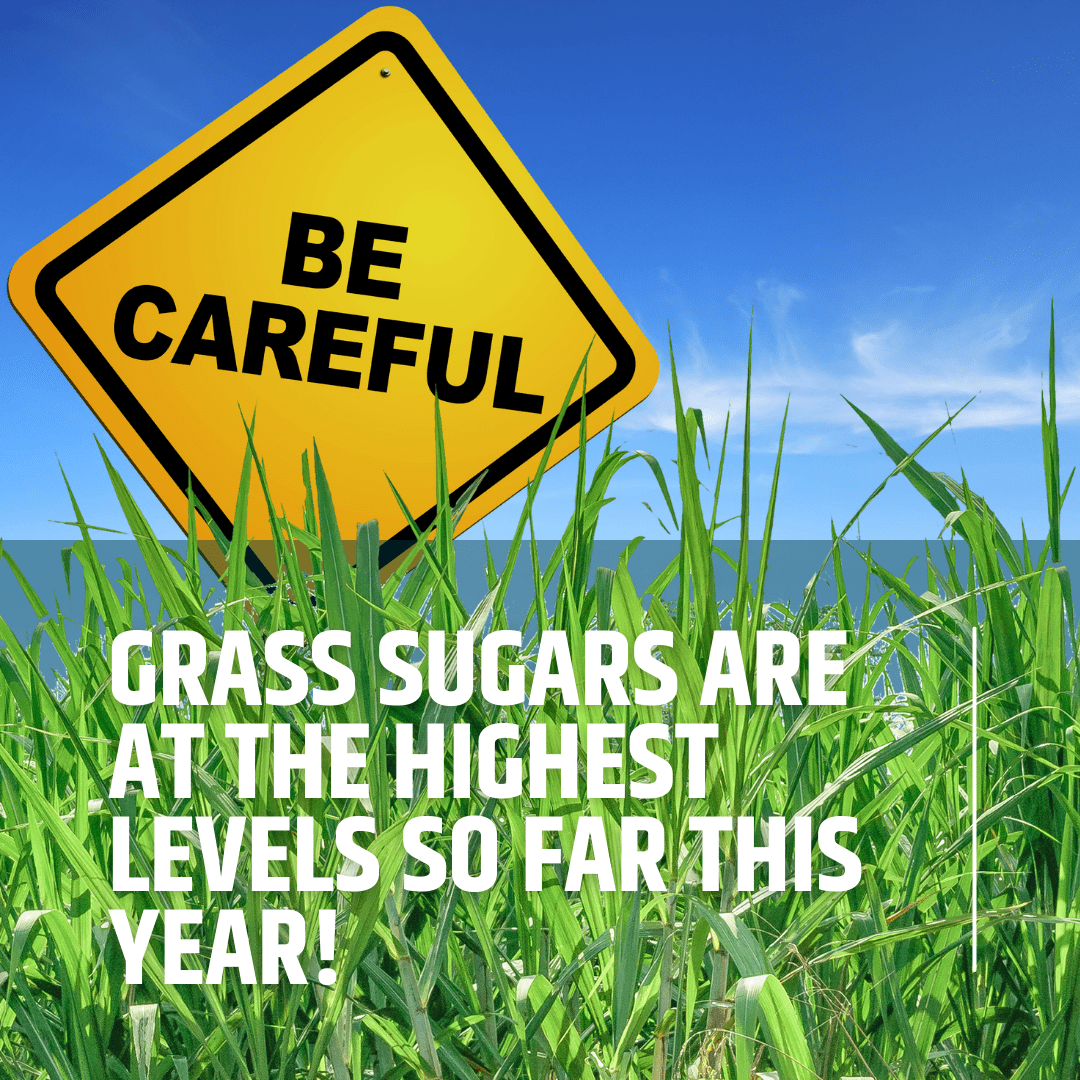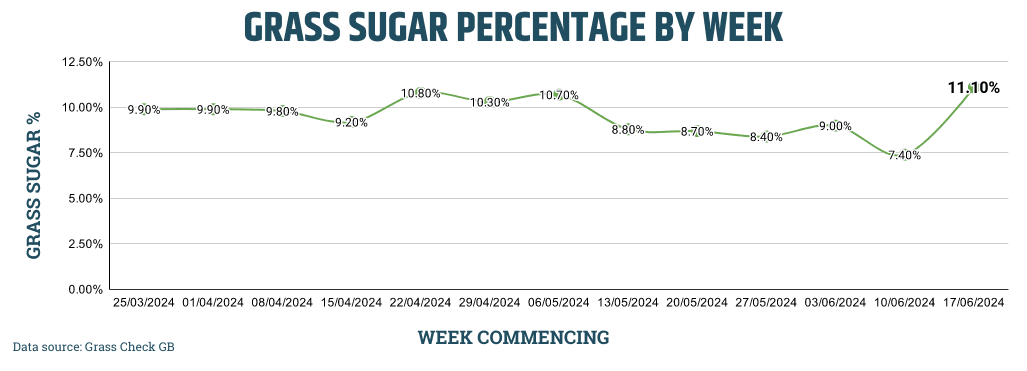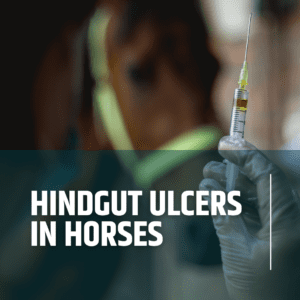
As the weather warms and the days get longer, the grass in our pastures undergoes significant changes. For horse owners, understanding these changes is crucial to maintaining the health and well-being of your equine companions. Recent data from GrassCheckGB shows that grass sugars are currently at their highest levels so far this year, posing potential risks to horses that are sensitive to these fluctuations.
What Are Grass Sugars?
Grass sugars, primarily in the form of fructans, are produced by plants as a source of energy. During the growing season, particularly in the spring and early summer, these sugars can accumulate to high levels. Factors such as temperature, sunlight, and plant stress contribute to these fluctuations.
Current Sugar Levels
According to GrassCheckGB, grass sugar levels have reached 11.10% for the week commencing 17th June, the highest so far this year. The previous high was 10.80% during the week commencing 22nd April. Notably, last week the levels were at 7.40%, the lowest this year, highlighting a significant increase within a short period.

Risks Associated with High Grass Sugars
High levels of grass sugars can pose several health risks to horses, particularly those predisposed to conditions like laminitis, insulin resistance, and equine metabolic syndrome (EMS). Here’s why it matters:
- Laminitis: Excessive intake of sugars can trigger laminitis, a painful and potentially debilitating condition affecting the hooves.
- Insulin Resistance: Horses with insulin resistance struggle to manage high sugar levels, which can exacerbate their condition.
- Obesity and EMS: High sugar intake can contribute to weight gain and metabolic disorders, leading to long-term health issues.
- Digestive Issues: High sugar levels increase the risks of colic, hindgut disorders, and discomfort.
- Mood and Behaviour Issues: High sugar levels can influence behaviour negatively, and discomfort can worsen your horse’s mood.
What Can You Do?
To protect your horses from the adverse effects of high grass sugars, consider the following strategies:
- Limit Grazing Time: Reduce the amount of time your horses spend grazing on lush pastures, particularly during the times of day when sugar levels are highest (late afternoon and early evening).
- Use a Grazing Muzzle: A grazing muzzle can help control the amount of grass your horse consumes while still allowing them to enjoy time outdoors.
- Monitor Body Condition: Keep a close eye on your horse’s body condition and weight. Adjust their diet and exercise routine accordingly to prevent obesity and related health issues.
- Alternative Forage: Provide low-sugar forage alternatives such as hay that has been soaked to reduce sugar content.
- Use EquiNectar: If you feel that a horse would benefit from an increased ability to digest grass, EquiNectar helps a horse digest fructans in the small intestine, rather than allowing them to ferment in the hindgut. Take a look at our reviews to read the real-world benefits. Contact us to discuss suitability for your horse.
Stay Informed
At EquiNectar, we are committed to providing horse owners with the latest information to keep their horses healthy and happy. Regularly check our website for updates on grass sugar levels and other essential equine health tips.
By staying vigilant and taking proactive measures, you can ensure your horses remain healthy and comfortable during periods of high grass sugar levels. If you need any advice don't hesitate to send us a message.




